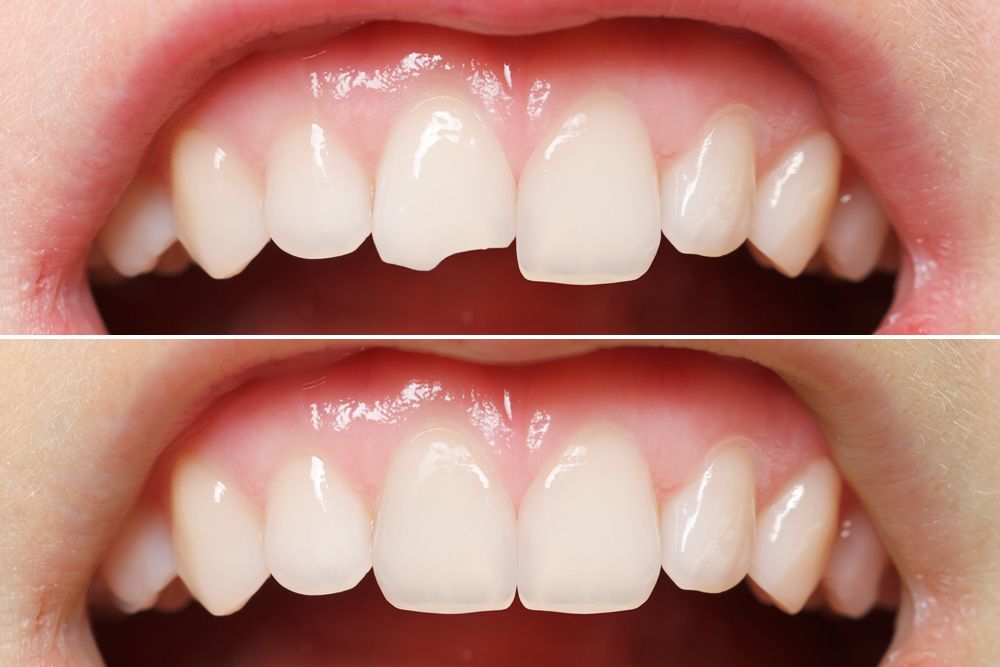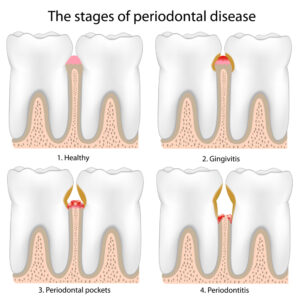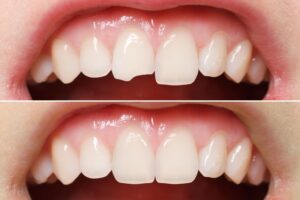
Maintaining optimal oral health is crucial for overall well-being, yet many people often overlook the early signs of gum disease, which can lead to more severe dental issues if left untreated. Gingivitis and gum recession are two common conditions that can significantly impact your oral health, but fortunately, they can be managed and even reversed with timely intervention. Composite resin bonding, a versatile dental procedure, plays a vital role in restoring both the functionality and aesthetics of your teeth, especially in cases of gum recession. In this article, we’ll explore gingivitis, gum recession, and the role of composite resin bonding in addressing these issues.

What is Gingivitis?
Gingivitis gum recession is the mildest form of gum disease, characterized by inflammation of the gums, which is often caused by the accumulation of plaque on the teeth. Plaque is a sticky film of bacteria that forms on your teeth and gums, especially when oral hygiene practices such as brushing and flossing are inadequate. If not removed, plaque can harden into tartar, leading to more severe gum disease.
Symptoms of Gingivitis:
1. Red, swollen gums
2. Bleeding during brushing or flossing
3. Bad breath (halitosis)
4. Tenderness in the gums
Despite its mild nature, gingivitis should not be taken lightly. If left untreated, it will progress to periodontitis, a severe form of gum disease that causes permanent damage to the gums and supporting structures of the teeth.
Causes of Gingivitis:
1. Poor oral hygiene
2. Smoking or tobacco use
3. Hormonal changes (e.g., during pregnancy)
4. Certain medications
5. Diabetes
6. Poor nutrition
Preventing and Treating Gingivitis: The key to avoiding gingivitis is maintaining good oral hygiene practices. Regular brushing, flossing, and professional dental cleanings are essential in keeping plaque and tartar at bay. If gingivitis is detected early, it can often be reversed with improved oral care and professional treatment, such as a thorough cleaning by a dentist or dental hygienist.
Gum Recession: A Common Consequence of Untreated Gingivitis
Gum recession occurs when the gum tissue around the teeth wears away, exposing more of the tooth. This condition can lead to increased tooth sensitivity, a higher risk of cavities, and an unsightly appearance due to exposed roots. Gum recession is often a consequence of untreated gingivitis, though other factors can also contribute to its development.
Causes of Gum Recession:
1. Untreated gingivitis or periodontitis
2. Aggressive brushing or flossing
3. Genetic predisposition
4. Hormonal changes
5. Tobacco use
6. Teeth grinding or clenching (bruxism)
Symptoms of Gum Recession:
1. Tooth sensitivity, especially to hot or cold.
2. Visible roots of the teeth.
3. Longer-looking teeth.
4. Notches or indentations near the gumline.
Preventing Gum Recession: Preventing gum recession largely depends on maintaining healthy gums. This includes brushing with a soft-bristled toothbrush, using proper brushing techniques, and avoiding tobacco products. Regular dental check-ups are also crucial for early detection and management of gum disease, which can help prevent recession.
Composite Resin Bonding: A Solution for Gum Recession
When gum recession occurs, one of the most effective cosmetic and restorative treatments is composite resin bonding. This minimally invasive procedure involves the application of a tooth-colored composite resin to the affected area, which can help cover exposed roots, reduce sensitivity, and improve the appearance of the teeth.

What is Composite Resin Bonding?
Composite resin bonding is a dental procedure where tooth-colored resin is applied and shaped to the teeth. The resin is then hardened with a special light, which bonds it securely to the tooth surface. This treatment is often used to repair chipped or cracked teeth, close gaps, or improve the appearance of discolored teeth. In the case of gum recession, composite bonding can protect the exposed tooth roots and enhance the overall aesthetics of your smile.
Benefits of Composite Resin Bonding for Gum Recession:
1. Protects Exposed Roots: Composite bonding can cover and protect the exposed roots of teeth, reducing sensitivity and the risk of cavities.
2. Improves Aesthetics: The tooth-colored resin is matched to your natural teeth, creating a seamless and natural-looking appearance.
3. Minimally Invasive: Unlike other treatments, composite bonding is a minimally invasive procedure that typically requires little to no removal of tooth structure.
4. Quick and Painless: The procedure is usually completed in one visit and involves minimal discomfort.
The Composite Bonding Process:
1. Consultation and Examination: Your dentist will examine your teeth and gums to determine if composite bonding is the right treatment for your gum recession. They will also discuss the procedure, potential outcomes, and any necessary preparations.
2. Preparation: The tooth surface is prepared by lightly etching it to ensure the resin adheres properly. In some cases, anesthesia may be used, especially if the area is sensitive.
3. Application of Composite Resin: The dentist applies the composite resin to the affected area, carefully shaping and molding it to blend with your natural teeth.
4. Curing: A special light hardens the resin, bonding it securely to the tooth.
5. Finishing Touches: The bonded area is polished to match the sheen of your natural teeth, ensuring a smooth and natural-looking finish.
The Importance of Early Intervention and Regular Dental Care
Both gingivitis and gum recession can be effectively managed with early intervention and regular dental care. Ignoring the early signs of gum disease can lead to more severe complications, including tooth loss. Regular visits to your dentist for check-ups and cleanings are essential in preventing and treating these conditions.
Key Takeaways:
1. Gingivitis: A common and mild form of gum disease that can lead to gum recession if left untreated.
2. Gum Recession: The exposure of tooth roots due to the loss of gum tissue, often caused by untreated gingivitis.
3. Composite Resin Bonding: A minimally invasive procedure that protects exposed tooth roots and improves the appearance of teeth affected by gum recession.







